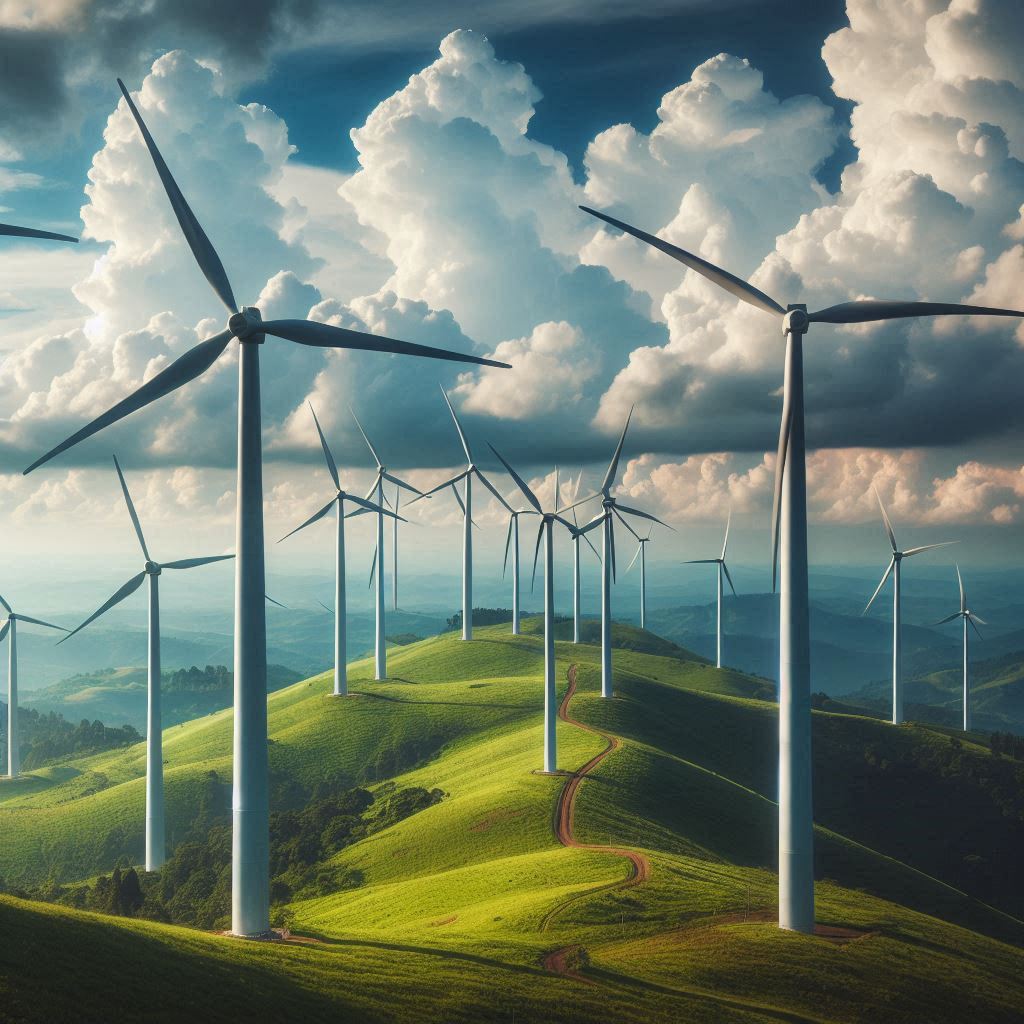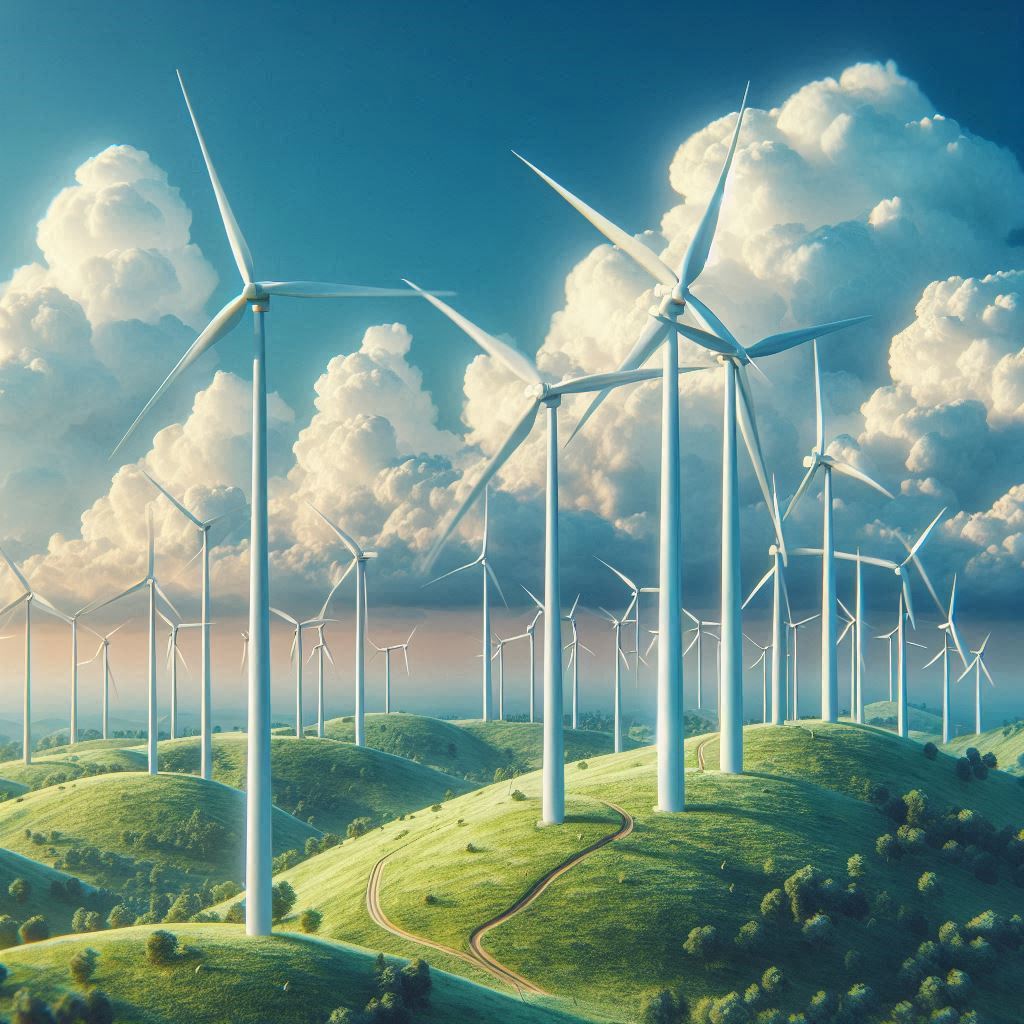Wind energy is a significant player in the renewable energy sector, offering a clean alternative to fossil fuels. Interestingly, an innovative approach combines traditional wind turbines with kite-based energy systems. This method leverages high-altitude winds to generate electricity more efficiently.
Wind turbines harness kinetic energy from the wind to generate electricity. The process begins with the spinning blades, which are designed to capture the energy from the wind. These blades are aerodynamically shaped to optimize efficiency and ensure they spin even with relatively low wind speeds.
When the wind blows, it causes the blades to rotate around a central hub, forming the rotor. The rotor is connected to a shaft that transfers the mechanical energy from the spinning blades to a generator. Inside the generator, this rotational energy is converted into electrical power through electromagnetic induction. Essentially, as the rotor turns the shaft, it spins magnets around a coil of wire, generating an electric current.
These turbines are usually installed on tall towers. The height of these towers is crucial because wind speeds tend to be stronger and more consistent at higher altitudes. By placing the turbine higher up, it can capture more kinetic energy from the wind, thereby increasing its efficiency and the amount of electricity it can produce.
Kite-based energy systems, also known as airborne wind energy (AWE) systems, use tethers to keep kites or aerial devices aloft. These systems are designed to capture high-altitude winds, which are typically stronger and more consistent than those found near the ground. The kites or aerial devices harness the kinetic energy from these winds and convert it into electrical power.
A key advantage of AWE systems is their ability to reach altitudes where wind speeds are higher and more reliable, enhancing energy production efficiency. The tethered kites can move in specific patterns to maximize energy capture, and the tension in the tethers is used to generate electricity either directly or by driving generators on the ground.
Why Integrate Wind Turbines and Kite Systems?
The integration of these technologies aims to maximize wind energy capture, reduce costs, and expand the geographical reach of renewable energy. Let’s break down the benefits.
Winds at high altitudes tend to be consistent and strong, providing an untapped energy resource. We can generate more power than traditional low-altitude wind turbines alone by using kites to capture these winds.
Kite-based systems can be deployed in a variety of terrains where traditional tall wind towers would be impractical. For instance, areas with complex geography or offshore locations can benefit from kites swaying high in the sky.
Building and maintaining tall wind towers is capital-intensive. Kites, on the other hand, require fewer materials and simpler infrastructure, potentially lowering the overall costs of energy production.
How Do They Work Together?
Integrating kites with wind turbines might seem challenging, but it actually creates a clever synergy. The process begins with the deployment of a kite, which is launched and tethered either to a ground-based generator or directly to the turbine’s base. Once airborne, the kite captures the more robust and consistent winds found at high altitudes, far above the reach of traditional wind turbine blades.
As the kite moves, it pulls on the tether, which turns a drum connected to a generator, thereby producing electricity. In some systems, the tension in the tether may also be used to assist the rotor of a traditional wind turbine, enhancing its efficiency. This dual approach leverages the strengths of kites and wind turbines, maximizing energy capture from the wind.
This innovative system allows for the generation of electricity in a more efficient manner by utilizing high-altitude winds, which are typically stronger and more reliable.
Practical Applications
Remote Areas
In isolated locations where grid infrastructure is lacking, deploying a combination of these systems can provide a reliable source of electricity. Think of remote islands or mountainous regions where traditional energy infrastructure would be challenging to install.
Offshore Energy Production
Offshore wind provides a vast opportunity for energy capture. High-altitude kites can harness the steady oceanic winds effectively. Additionally, kites have less visual and environmental impact compared to huge wind turbines.
Utility-Scale Power Plants
Large-scale power plants can integrate these hybrid systems to boost their renewable energy outputs. As demand for green energy grows, employing every available technology helps in meeting sustainability goals.
The Future of Wind Energy Integration
Innovation in the renewable energy field is progressing rapidly. Researchers and engineers are continually improving the efficiency and reliability of these systems, ensuring they can withstand varied weather conditions and provide consistent power.
Current studies focus on materials for kites and tethers, ensuring they are lightweight and durable. There is also significant work being done to optimize the trajectory control systems for kites, which is crucial for maximizing energy capture.
The reduced material usage in kite-based systems means less environmental impact from production and installation. Plus, the flexibility of these systems means they can avoid sensitive ecosystems, adding to their eco-friendly credentials.
Considerations
Of course, there are still hurdles to overcome. The technology is relatively new, and there are several considerations before it can be widely adopted.
Ensuring that kites remain aloft and operational under various weather conditions is critical. Strong winds are beneficial for energy capture, but extreme weather can be detrimental.
Regulations around air safety must be adhered to, particularly when dealing with high-altitude systems. Governments and regulatory bodies need to establish guidelines for the safe deployment and operation of kite-based systems.
New technologies often face resistance or skepticism from the public. Effective communication around the benefits and safety of integrated wind-turbine and kite systems is paramount.


